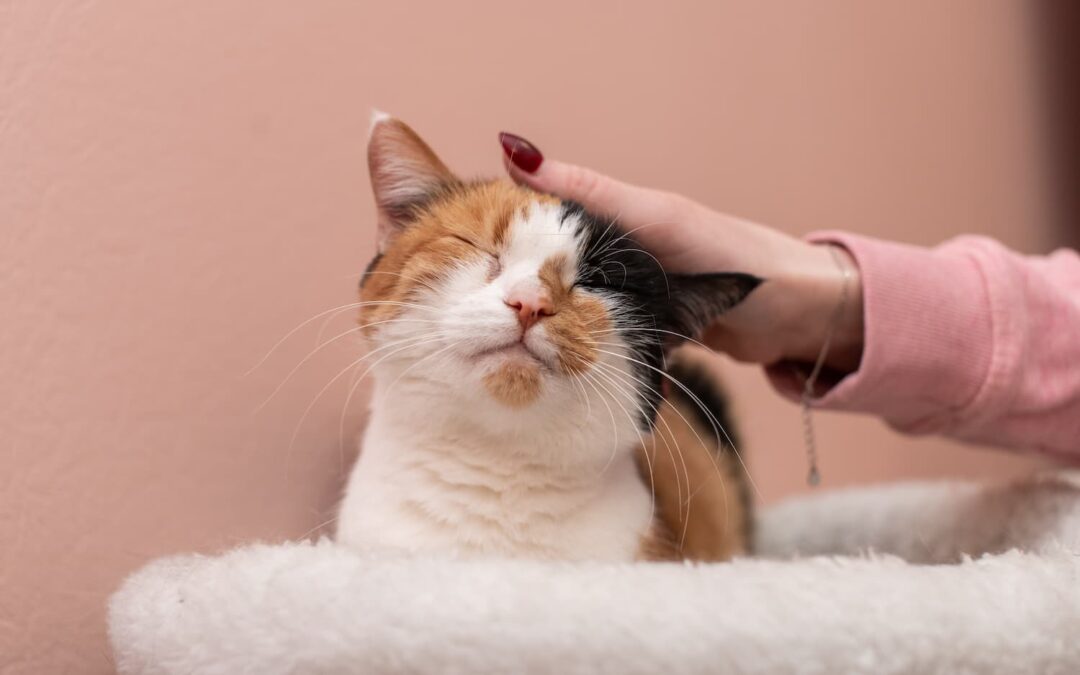As the golden hues of September roll in and we begin settling into a cozier routine, it’s also the perfect time to make sure our feline companions are feeling their best. Cats may not need school supplies or pumpkin spice lattes, but they do benefit from a seasonal refresh in their health and wellness routines.
Whether your cat is a laid-back lap-warmer or an independent adventurer, keeping them happy and healthy doesn’t have to be complicated. A few mindful tweaks this fall can go a long way in preventing health issues, supporting emotional wellbeing, and deepening your bond.
Here are seven vet-approved ways to keep your cat thriving all through September and beyond.
1. Schedule a September Wellness Exam
Cats are experts at hiding discomfort, which is why routine exams are so important. A wellness exam gives our veterinary team the chance to check your cat’s eyes, ears, teeth, heart, weight, and more, all the things you might not notice on your own.
September is a great time to get this visit on the calendar. You’ll catch any changes that may have developed over the summer, and you’ll have time to plan ahead for the colder months when cats tend to become more sedentary.
During a wellness exam, our veterinary team can also assess vaccine schedules, diet, and behavioral changes. These check-ins are an important part of feline preventative care and give you peace of mind that your cat is staying on track.
2. Stay on Top of Flea and Tick Prevention
Don’t let cooler temperatures fool you. Fleas and ticks are still active well into the fall in Minneapolis. And yes, even indoor cats can be exposed to parasites and can hitch a ride inside on your clothing, other pets, or through open windows.
The result? Itchy skin, hair loss, or worse. Some parasites can even carry diseases that affect both cats and humans.
Monthly prevention is key. Look for veterinary-recommended topical or oral treatments that are safe and effective. You can stock up with just a few clicks through our online pharmacy, making it easier than ever to keep your cat protected all year long.
3. Reassess Their Diet for the Cooler Months
As the temperature drops, your cat’s activity level might shift too. Some cats become less active and sleep more, while others may become hungrier and more vocal.
It’s a good time to evaluate whether their current food still meets their needs. Is their weight stable? Are they eating more or less than usual? A quick dietary check-in can help prevent unnecessary weight gain or nutritional gaps.
Consider asking our veterinary team about life-stage nutrition, especially if your cat is entering their senior years or has a chronic health condition. Whether it’s a switch to a prescription diet or incorporating supplements, small adjustments can make a big difference in how your cat feels day to day.
4. Enrich Their Environment
Even the most confident cat can start to feel cooped up as windows stay closed and daylight fades earlier. Keeping your cat mentally and physically stimulated can reduce stress and prevent behavioral issues.
A few ideas to keep your feline friend entertained this fall:
- Place a bird feeder outside a window and set up a cozy perch
- Rotate toys weekly to keep them exciting
- Introduce puzzle feeders to slow down meals and challenge their mind
- Provide vertical space like cat trees or wall-mounted shelves
These changes can help prevent boredom and encourage movement, which is especially helpful for indoor cats who aren’t exploring outside.
5. Check Their Teeth
Bad breath isn’t just a cosmetic issue. It’s often the first sign of dental disease in cats. By age three, most cats have some form of periodontal disease, which can lead to tooth loss, gum infections, and even organ damage if left untreated.
Yet many cat owners don’t notice a problem until their pet is in pain. That’s why regular dental checks are so important.
Brushing your cat’s teeth daily is the gold standard, but we recognize that’s not always realistic. Dental treats, water additives, and professional cleanings are all valuable tools in keeping your cat’s mouth healthy. If our veterinary team notices tartar buildup or inflamed gums during a visit, we may recommend a dental cleaning under anesthesia for a thorough, pain-free evaluation.
6. Maintain a Healthy Weight
It’s easy to overindulge your cat when they’re especially cute and cuddly. But those extra calories can add up quickly. Feline obesity increases the risk of arthritis, diabetes, liver disease, and even some cancers.
Our veterinary team can help you determine your cat’s ideal weight and set up a plan to get them there. This might include:
- Measuring food portions rather than free-feeding
- Limiting high-calorie treats
- Choosing a diet formulated for weight control
- Encouraging daily play sessions for exercise
You can also ask about body condition scoring during your next exam, which gives you a clearer sense of whether your cat is maintaining a healthy balance.
7. Show Them Some Extra Love
Cats may be independent, but they still crave affection and consistency. Whether it’s a daily brushing session, some lap time while you wind down at night, or just quiet companionship, your presence helps your cat feel secure.
Many cats are also sensitive to environmental stressors like schedule changes, noisy construction, or new family members. Offering predictability and a calm environment can go a long way in reducing anxiety.
You know your cat best. If they seem withdrawn, irritable, or out of sorts, don’t ignore it. Emotional wellness is just as important as physical health, and any sudden behavior changes should be discussed with our veterinary team.
Feline Wellness Starts With You
Helping your cat feel their best isn’t about perfection—it’s about consistency, attention, and care. These simple steps each play a role in protecting your cat’s health and happiness, not just in September but all year long.
If you’re due for a wellness visit, have questions about your cat’s behavior or weight, or want help choosing the right flea and tick prevention, we’re here for you. Schedule an appointment with South Hyland Pet Hospital today and give your feline friend everything they need to thrive.



